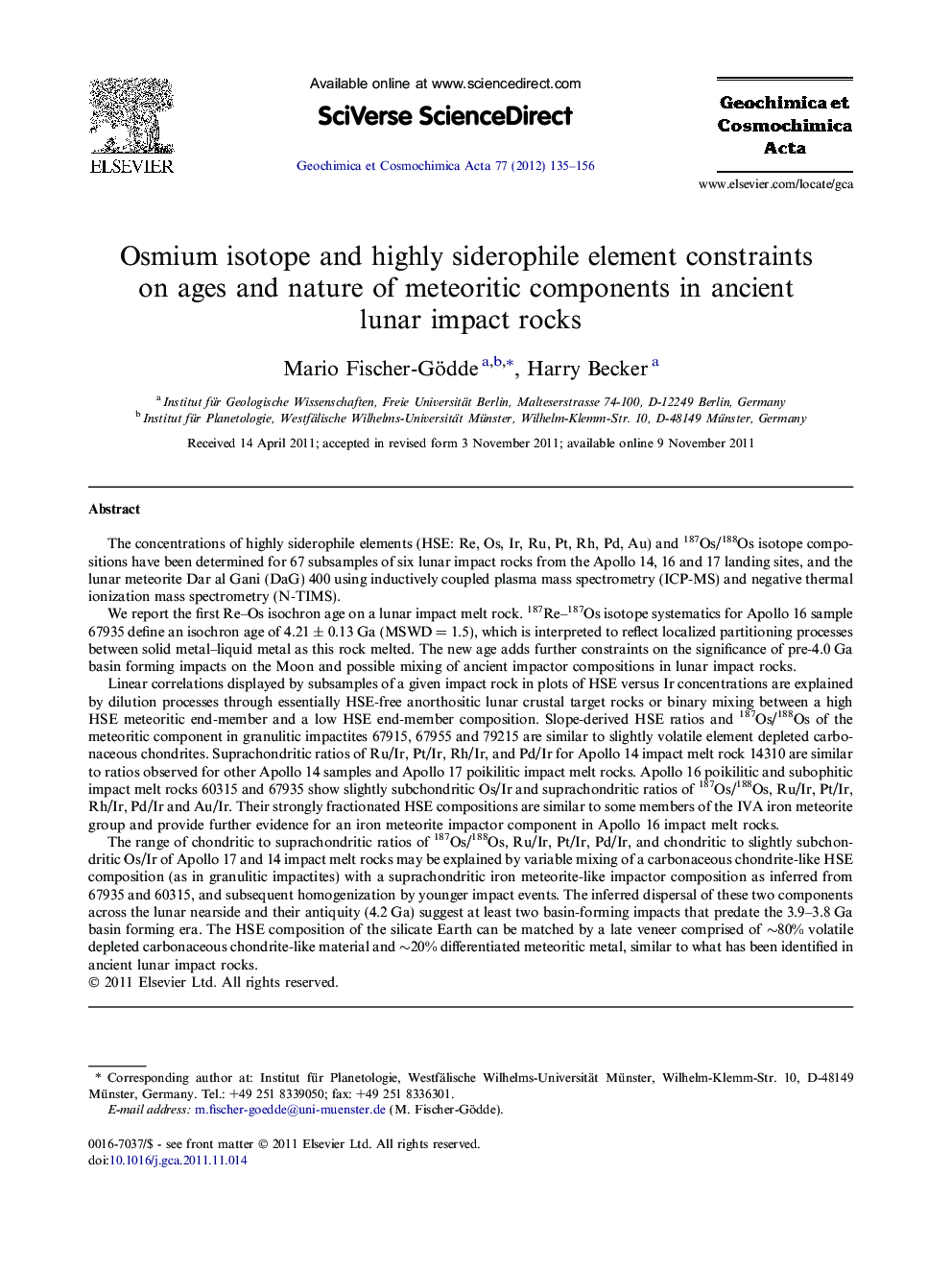| Article ID | Journal | Published Year | Pages | File Type |
|---|---|---|---|---|
| 6439351 | Geochimica et Cosmochimica Acta | 2012 | 22 Pages |
Abstract
The range of chondritic to suprachondritic ratios of 187Os/188Os, Ru/Ir, Pt/Ir, Pd/Ir, and chondritic to slightly subchondritic Os/Ir of Apollo 17 and 14 impact melt rocks may be explained by variable mixing of a carbonaceous chondrite-like HSE composition (as in granulitic impactites) with a suprachondritic iron meteorite-like impactor composition as inferred from 67935 and 60315, and subsequent homogenization by younger impact events. The inferred dispersal of these two components across the lunar nearside and their antiquity (4.2Â Ga) suggest at least two basin-forming impacts that predate the 3.9-3.8Â Ga basin forming era. The HSE composition of the silicate Earth can be matched by a late veneer comprised of â¼80% volatile depleted carbonaceous chondrite-like material and â¼20% differentiated meteoritic metal, similar to what has been identified in ancient lunar impact rocks.
Related Topics
Physical Sciences and Engineering
Earth and Planetary Sciences
Geochemistry and Petrology
Authors
Mario Fischer-Gödde, Harry Becker,
